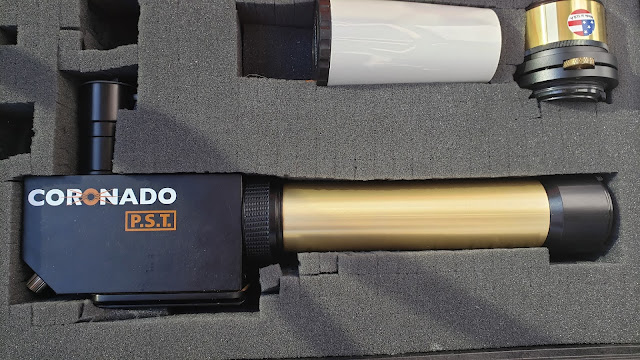After getting all the parts to the telescope working, I took all of the parts outside to test the setup. It was late in the day and the sun was low on the horizon just above the neighbour's house, so it wasn't the best test as I couldn't be certain that I could distinguish the ground from the sun. My telescope gave some readings and they seemed to make sense, so it was a good sign that I am on the right track.
 |
| Assembled telescope | | |
|
|
I ran a power cord from inside to outside, attached the LNB to the holders and waved my telescope around the sky.
At first, I didn't seem to be getting much of anything, but then I found a bad connection at the LNB. Once that was sorted, my results were much better.
The db adjustment on the front of the satellite finder needed some adjustments. At first, I thought it was a volume knob for the sound, but quickly found that it controlled the sensitivity of the finder.
I pointed the telescope at ground and adjusted the db knob until it read just about full scale deflection.
 |
| Full scale deflection, pointed at the ground |
I pointed the telescope at empty sky and got a very low reading. So far so good.
 |
| Empty sky |
|
|
|
I then lowered the tilt on the telescope until it was pointing at the sun. I aligned the shadow of the LNB with the centre of the dish, as this is a prime focus dish. If you are using an offset dish, this technique will not work for you. My finder indicated between 1 and 3 on the scale. The needle bounced around a little bit.
 |
| Result of my telescope pointed roughly at the sun |
I then pointed my telescope at empty sky again and tried standing in front of it to see if it could detect me, and I was surprised to see that it could. It gave some pretty strong returns off of me.
 |
| Telescope detecting me! |
Looks like the telescope is working. Next step is to test it during mid day.






Comments
Post a Comment